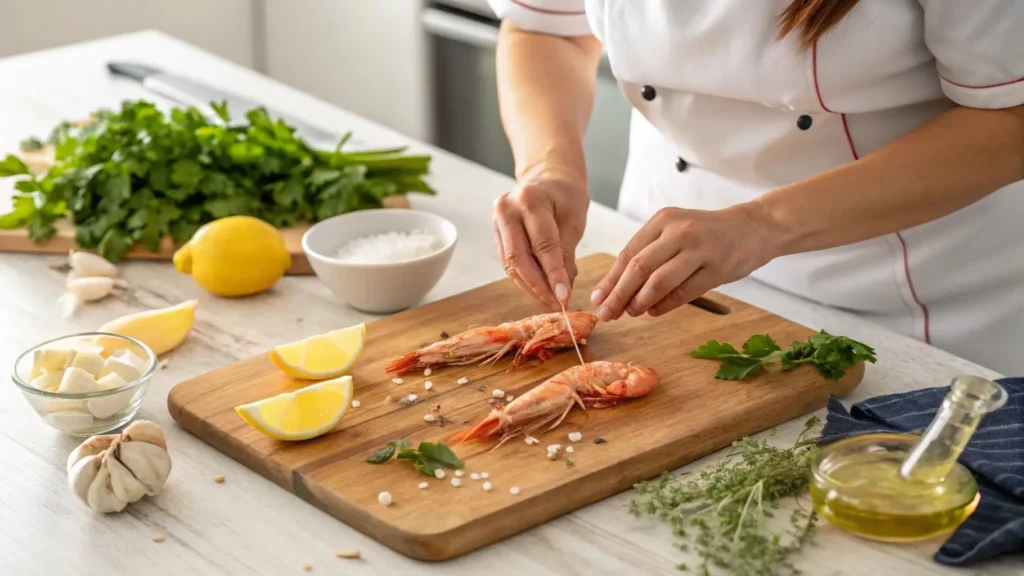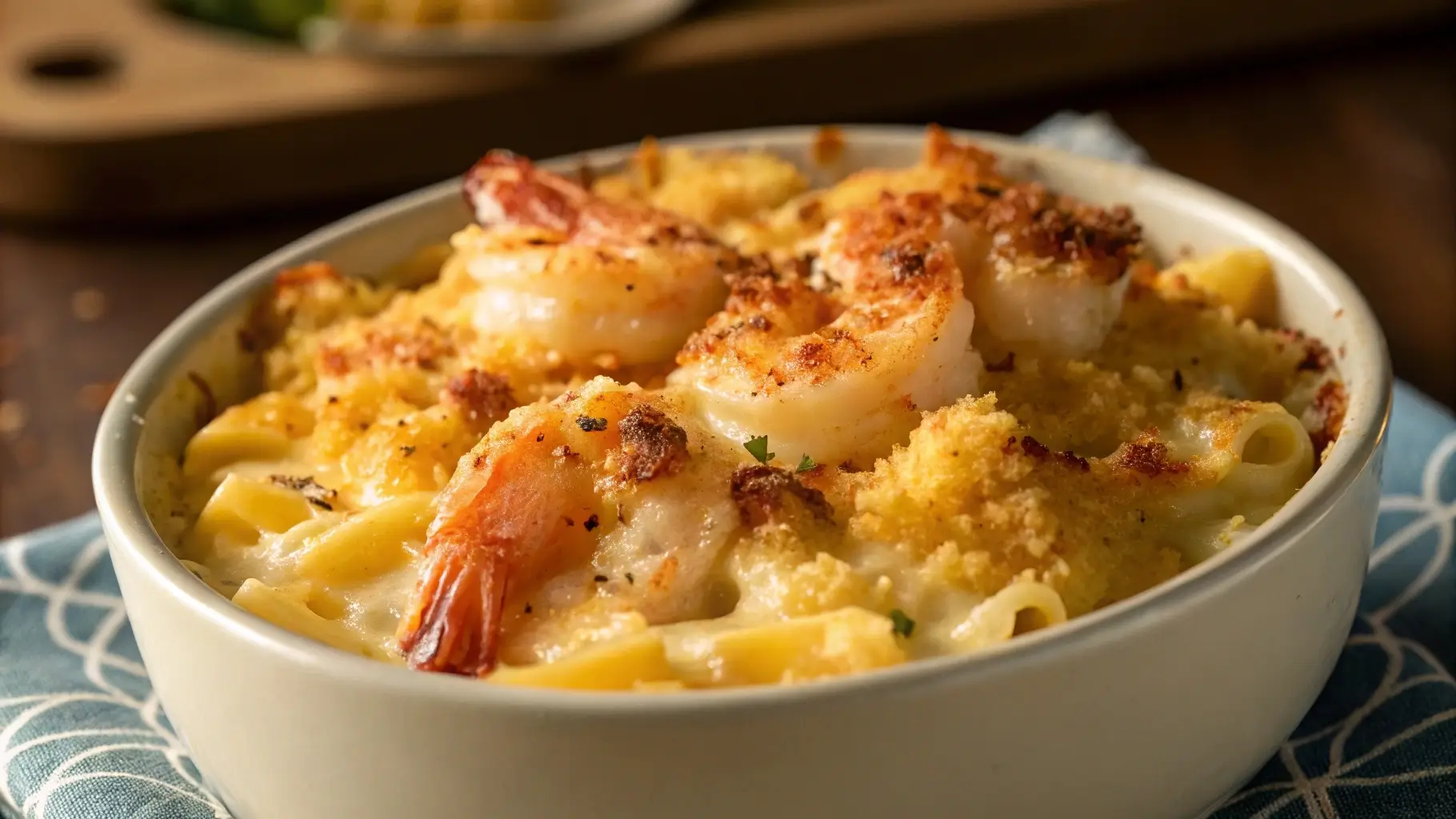Table of Contents
Combining the creamy decadence of mac and cheese with the delicate sweetness of langostino takes comfort food to a whole new level. This luxurious dish is a crowd-pleaser, perfect for casual family dinners or indulgent celebrations. Packed with buttery seafood flavors and rich, cheesy goodness, macaroni and cheese langostino is surprisingly easy to make at home.
In this guide, we’ll explore the magic behind this dish, walk through the recipe step-by-step, and offer tips for perfecting it every time. From understanding what makes langostino special to serving ideas and variations, we’ve got all the bases covered. Let’s dive into this irresistible blend of comfort and sophistication!
What is Macaroni and Cheese Langostino?
Understanding Langostino and Its Appeal
Langostino is a seafood delicacy that bridges the gap between lobster and shrimp. While it tastes like lobster, its texture is softer and closer to shrimp, making it perfect for recipes that call for tender, bite-sized pieces of seafood. Its buttery sweetness pairs exceptionally well with the creamy cheese sauce in mac and cheese, adding a gourmet twist to a classic favorite.
What makes macaroni and cheese langostino special? It’s all about balance. The richness of melted cheddar and Parmesan meets the delicate flavor of langostino, creating a dish that’s indulgent yet surprisingly light. Langostino is also more affordable than lobster, making it a great option for anyone craving seafood without breaking the bank.
The Evolution of the Dish
While macaroni and cheese has long been a go-to comfort food, the addition of seafood elevates it to something extraordinary. Inspired by lobster mac and cheese, this dish swaps lobster for langostino, offering a similar flavor profile with less effort (no cracking shells!).
In recent years, macaroni and cheese langostino has gained popularity in upscale restaurants and home kitchens alike. It combines the nostalgia of mac and cheese with the elegance of seafood, making it a dish that feels both familiar and fancy.
Whether you’re hosting a dinner party or treating yourself to something special, this dish is a guaranteed hit. In the next section, we’ll dive into the ingredients you’ll need to bring this recipe to life.
Ingredients You’ll Need for Macaroni and Cheese Langostino
Creating the perfect macaroni and cheese langostino starts with gathering the right ingredients. Each component plays a crucial role in achieving the creamy, indulgent texture and rich, seafood-forward flavor that defines this dish.
The Stars of the Dish
- Langostino Tails: These delicate, lobster-like morsels are the highlight of the recipe. They’re often sold pre-cooked and frozen, making them convenient to use. Look for langostino tails in the frozen section of your grocery store or specialty seafood markets.
- Pasta: Elbow macaroni is the classic choice, but you can substitute cavatappi, shells, or penne for a slightly different texture. The pasta’s ridges help trap the creamy cheese sauce for maximum flavor.
Cheese Selections and Seasonings
- Cheese: A blend of sharp cheddar and creamy Gruyère works beautifully, but you can experiment with other varieties like Parmesan, mozzarella, or Monterey Jack.
- Butter and Flour: These are the building blocks of the roux, which forms the base of the cheese sauce.
- Milk and Half-and-Half: Combining these creates the velvety smooth texture of the sauce. Whole milk is preferred for richness.
- Mustard Powder and Paprika: These add depth to the cheese sauce, giving it a subtle tang and smoky flavor.
- Breadcrumbs (Optional): For a crispy topping, mix breadcrumbs with melted butter and sprinkle them over the dish before baking.
For inspiration on working with pasta dishes, check out The Ultimate Shrimp Bowl Guide, where balance and flavor are key.
Step-by-Step Recipe for Macaroni and Cheese Langostino
Preparing the Langostino
- Defrost Properly: Place the frozen langostino tails in a colander, cover them, and thaw in the refrigerator overnight. If you’re in a hurry, use cold running water to speed up the process.
- Season Lightly: After defrosting, pat the langostino dry and toss them with a pinch of salt and a squeeze of lemon juice to enhance their natural sweetness.
Making the Cheese Sauce
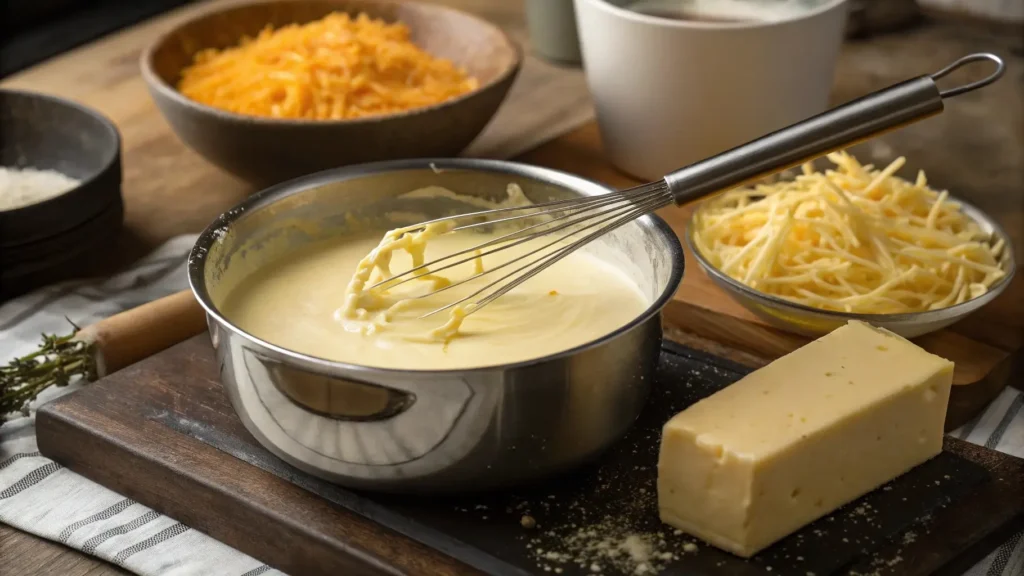
- Create the Roux: Melt butter in a large saucepan over medium heat. Add the flour and whisk constantly for 2–3 minutes until the mixture is golden and bubbly.
- Add the Dairy: Gradually pour in the milk and half-and-half, whisking to combine. Keep stirring until the sauce thickens and coats the back of a spoon.
- Incorporate the Cheese: Remove the pan from heat and stir in shredded cheddar and Gruyère until fully melted and smooth. Season with mustard powder, paprika, salt, and pepper.
Assembling and Baking the Dish

- Combine Ingredients: In a large mixing bowl, toss the cooked pasta and langostino tails with the cheese sauce until evenly coated.
- Prepare for Baking: Transfer the mixture to a greased baking dish. If desired, sprinkle breadcrumbs and extra cheese on top for a golden, crispy crust.
- Bake to Perfection: Preheat your oven to 375°F and bake the dish for 15–20 minutes, or until the top is bubbly and slightly browned.
- Let It Rest: Allow the mac and cheese to cool for 5 minutes before serving to let the flavors meld together.
Tips and Tricks for Perfect Macaroni and Cheese Langostino
Crafting the ultimate macaroni and cheese langostino requires a few expert tips. These suggestions will help you avoid common pitfalls and achieve a dish that’s irresistibly creamy and perfectly balanced.
Avoiding Common Mistakes
- Don’t Overcook the Langostino: Langostino tails are delicate and already cooked when purchased. Simply warm them in the cheese sauce or during baking. Overcooking can make them rubbery, which will compromise the dish’s texture.
- Prevent Lumpy Sauce: When making the roux, whisk constantly to avoid lumps. Gradually add the milk while whisking to ensure a smooth, creamy consistency.
- Use the Right Pasta: Choose pasta with ridges or hollow shapes like elbow macaroni or shells. These types capture the cheese sauce, ensuring every bite is flavorful.
Enhancing the Dish
- Add Breadcrumb Topping: For a satisfying crunch, mix panko breadcrumbs with melted butter and sprinkle them over the mac and cheese before baking.
- Experiment with Cheeses: While sharp cheddar is a staple, try blending Gruyère, Monterey Jack, or even Brie for extra depth and creaminess.
- Season Thoughtfully: A dash of cayenne or smoked paprika adds a subtle kick, while fresh herbs like parsley or thyme enhance the overall flavor.
For more tips on enhancing seafood-based dishes, explore Garlic Butter Langostino Recipe.
Variations of Macaroni and Cheese Langostino
One of the best things about macaroni and cheese langostino is its versatility. Whether you’re aiming for a luxurious twist or a fun, family-friendly version, there’s no limit to your creativity.
Regional Twists
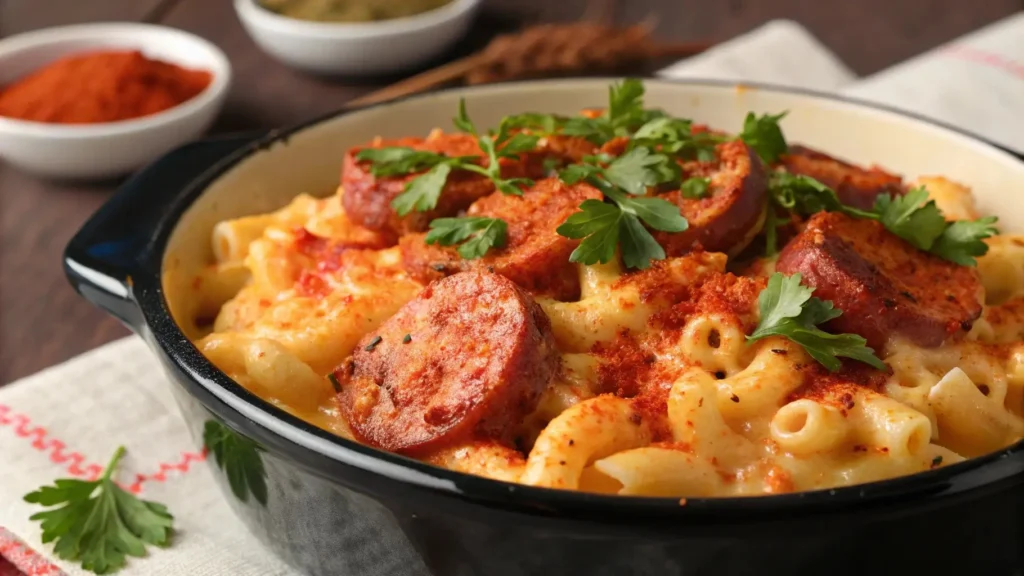
- Cajun-Inspired Langostino Mac and Cheese: Add a touch of New Orleans flair by seasoning the cheese sauce with Cajun spices like paprika, garlic powder, and cayenne. Include diced Andouille sausage for a smoky kick.
- Italian-Inspired Variation: Swap cheddar for Parmesan and Fontina cheese, and add a splash of white wine to the sauce. Finish with a drizzle of truffle oil for an indulgent, earthy aroma.
Seafood Lovers’ Variations
- Lobster and Langostino Mac and Cheese: Combine lobster meat with langostino for a double dose of seafood decadence. This combination elevates the dish, making it ideal for special occasions.
- Crab and Langostino Mac and Cheese: Mix lump crabmeat into the cheese sauce for a sweeter, slightly briny flavor. Add Old Bay seasoning to tie the flavors together.
Lighter Alternatives
If you’re looking to make the dish a bit lighter:
- Substitute whole milk with low-fat milk or almond milk.
- Use Greek yogurt in place of some cheese to maintain creaminess with fewer calories.
- Incorporate extra vegetables like roasted broccoli or spinach for added nutrition and texture.
No matter which variation you try, these adaptations ensure your macaroni and cheese langostino fits any mood or occasion.
FAQs About Macaroni and Cheese Langostino
When making macaroni and cheese langostino, you may encounter a few questions. Here are answers to common concerns to help you perfect this dish.
What’s the Difference Between Langostino and Lobster?
Langostino, though often mistaken for lobster, comes from a different family of crustaceans. While they share a similar flavor profile, langostino has a slightly sweeter taste and a softer texture compared to lobster. It’s also more affordable, making it an excellent choice for recipes like macaroni and cheese langostino.
Can You Make This Dish Ahead of Time?
Absolutely! To make ahead:
- Prepare the cheese sauce and cook the pasta, but don’t assemble the dish yet.
- Store the sauce and pasta separately in airtight containers in the refrigerator for up to 2 days.
- When ready to serve, combine the pasta, langostino, and sauce, then bake as directed.
To reheat leftovers, cover the dish with foil and warm it in a 350°F oven to maintain the creamy texture without drying it out.
What’s the Best Pasta for This Recipe?
Pasta shapes with ridges or hollows work best because they hold the cheese sauce well. Classic choices include elbow macaroni, cavatappi, shells, or penne. For a more elegant twist, consider orecchiette or farfalle.
How Do You Store Leftovers?
Leftovers should be stored in an airtight container in the refrigerator and consumed within 3 days. To reheat, use the oven for best results, or gently warm the dish on the stovetop, adding a splash of milk to restore creaminess. Avoid using the microwave, as it can make the sauce grainy.
How to Serve Macaroni and Cheese Langostino
Presentation and pairings can take your macaroni and cheese langostino from delicious to unforgettable.
Pairing Suggestions
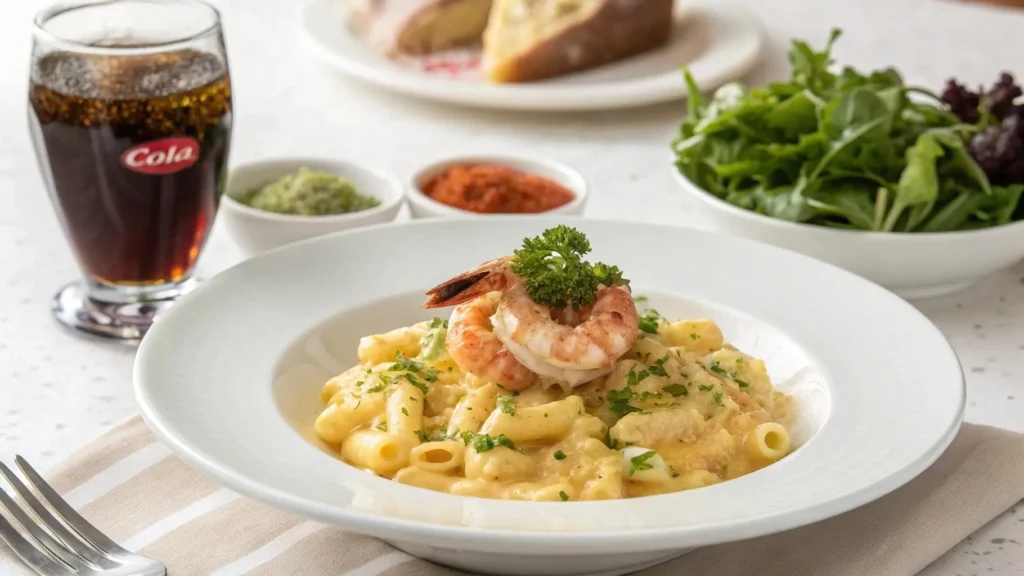
- Side Dishes: Complement the richness of the dish with a crisp green salad, roasted asparagus, or garlic bread. These lighter sides balance the creamy, indulgent pasta.
- Beverages: A chilled white wine like Chardonnay or Sauvignon Blanc pairs beautifully with the seafood and cheese. If you prefer non-alcoholic options, lemonade or iced tea with a hint of citrus is refreshing.
Presentation Ideas
- Individual Servings: Serve macaroni and cheese langostino in ramekins or mini casserole dishes for a personalized touch. Top each portion with breadcrumbs and fresh herbs for a gourmet look.
- Family-Style Dish: For casual gatherings, serve the dish in a large, oven-to-table baking dish. Garnish with parsley or lemon zest for a pop of color.
- Special Occasions: Add a luxurious flair by drizzling truffle oil over the dish just before serving. Pair with elegant table settings to impress your guests.
